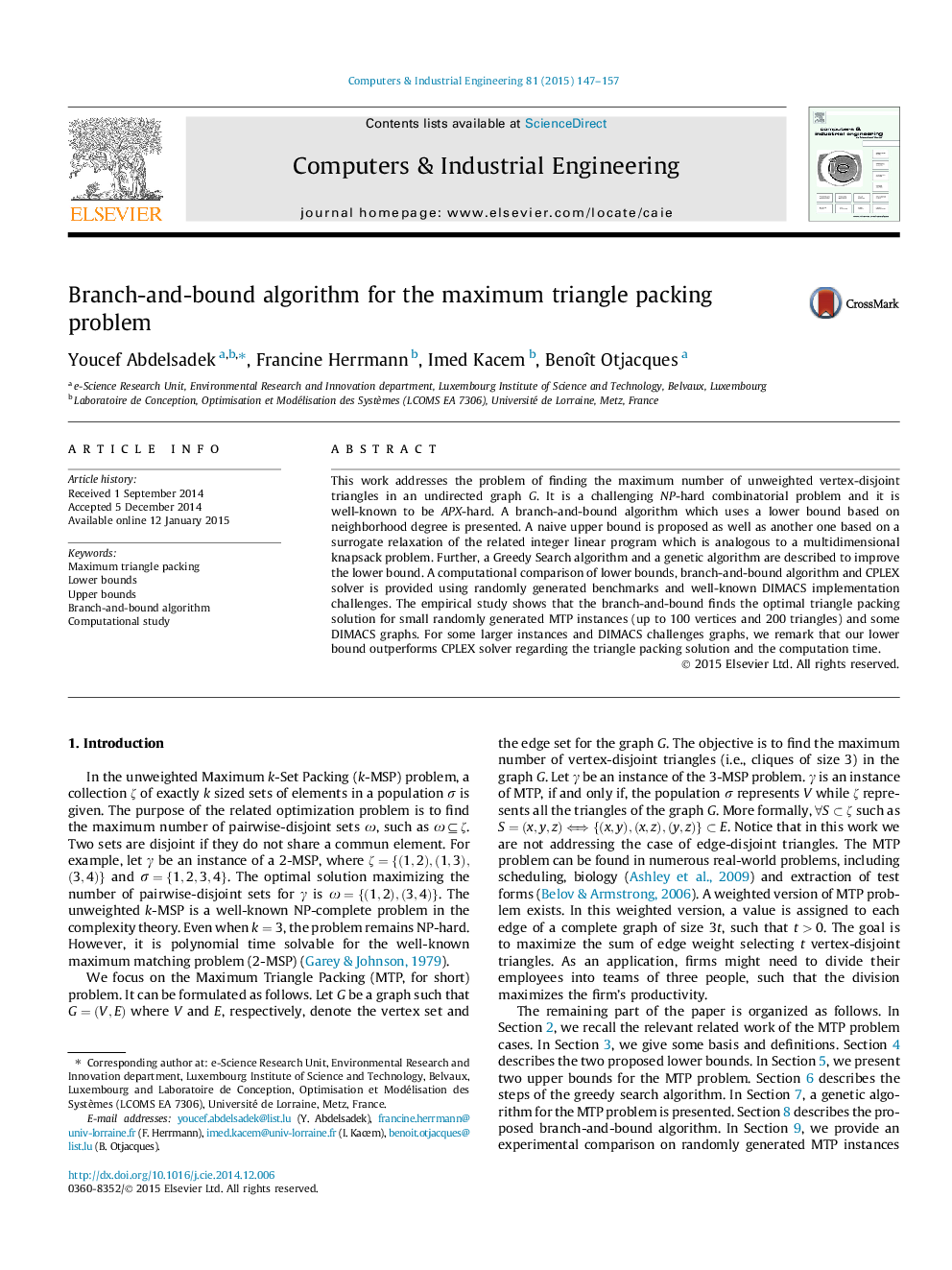| Article ID | Journal | Published Year | Pages | File Type |
|---|---|---|---|---|
| 1133775 | Computers & Industrial Engineering | 2015 | 11 Pages |
•We introduce a new branch-and-bound algorithm for the maximum triangle packing problem.•The branch-and-bound algorithm uses a lower bound based on neighborhood degree.•We present a novel upper bound based on a surrogate relaxation of the related ILP.•Our branch-and-bound algorithm reaches optimality for relatively small instances.•For large instances the lower bound is almost as efficient as CPLEX or even better.
This work addresses the problem of finding the maximum number of unweighted vertex-disjoint triangles in an undirected graph G. It is a challenging NP-hard combinatorial problem and it is well-known to be APX-hard. A branch-and-bound algorithm which uses a lower bound based on neighborhood degree is presented. A naive upper bound is proposed as well as another one based on a surrogate relaxation of the related integer linear program which is analogous to a multidimensional knapsack problem. Further, a Greedy Search algorithm and a genetic algorithm are described to improve the lower bound. A computational comparison of lower bounds, branch-and-bound algorithm and CPLEX solver is provided using randomly generated benchmarks and well-known DIMACS implementation challenges. The empirical study shows that the branch-and-bound finds the optimal triangle packing solution for small randomly generated MTP instances (up to 100 vertices and 200 triangles) and some DIMACS graphs. For some larger instances and DIMACS challenges graphs, we remark that our lower bound outperforms CPLEX solver regarding the triangle packing solution and the computation time.
